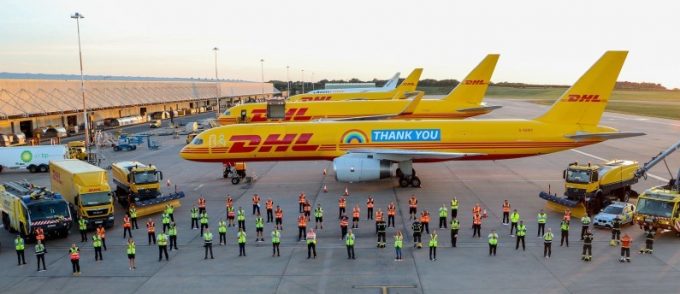DVZ radar: DHL Express awaits the next e-commerce star
It is all about networking

From 1 January, US customers of DHL Express will pay at least 5.9% more for their traffic with the integrator, which has also indicated that some surcharges will also increase.
The company is in line with FedEx, which announced a 5.9% general rate increase for next year last month, a move flanked by some increases in surcharges. And, historically UPS has moved in lockstep with FedEx on annual rate increases, so all integrator customers seem likely to face a 5.9% base rate hike for much of their traffic.
But industry observers and shipping consultants have warned that the overall rate hikes will be considerably more than 5.9%, due to the escalating surcharges. The integrators have adjusted these several times, usually blaming higher costs, and kept peak surcharges in place way beyond the normal peak season.
DHL can certainly point to investment in the US as well as the rest of the Americas. For the 2020-2022 period, it has planned to spend more than $360m, most on facility expansion and upgrades.
Some $79.43m has gone into the company’s Canadian hub at Hamilton International Airport. With a footprint of 22,110 sq metres, the recently completed facility is four times larger than DHL’s old setup at the airport, and is its largest in Canada. Its automated sorting system can handle 28,000 packages in an hour.
Hamilton is not only the Canadian hub for the integrator, but also its main gateway for incoming traffic. With the permanent presence of the Canada Border Services Agency onsite, it accounts for 60% of DHL’s Canadian customs clearances.
The airport is also the hub of Cargojet, Canada’s largest all-cargo airline. Its core business is the linehaul of express traffic for the integrators and Canada Post, but it also offers ACMI and charter services and operates scheduled transatlantic freighter flights. Currently it operates 11 freighters for DHL on an ACMI basis.
The integrator’s use of all-cargo aircraft increased sharply last year, when the Covid-19 outbreak decimated the bellyhold capacity of passenger flights that had been a central plank in its strategy. This led to the addition of three international routes for Cargojet.
The airline serves five Canadian routes for DHL, three routes to Mexico (via US points) and two to the UK, both of which originate at the integrator’s US hub in Cincinnati. One goes via Hamilton to London Heathrow, the other directly to the integrator’s UK hub at East Midlands International Airport.
Apparently, DHL is looking to add another international route to the partnership with the Canadian airline.
Cargojet, whose facility at Hamilton is next door to DHL’s, is also looking at expansion at the airport.
“We’re very tight for warehouse capacity – not only in Hamilton,” said Jamie Porteous, executive VP and CCO. Cargojet has grown rapidly in recent years and is due to add another freighter to its fleet this year.
In the first quarter, it saw double-digit growth, but that momentum slowed in the second quarter, largely a reflection of Amazon’s Canadian business, according to Mr Porteous. For one thing, the e-commerce giant did not run a Prime-week promotional event in Canada this summer, and a chunk of its Canadian traffic now moves on two of its own freighters operated by Cargojet.
Mr Porteous is bracing himself for a strong fourth quarter.
“Everybody indicates that the peak will be similar to last year. We’re expecting strong, two-digit growth,” he said.
The carrier’s fleet is fully utilised, running charters in down times of the regular schedule. These currently include regular weekend flights from Shanghai to North America.
“We could do more if we had more planes,” Mr Porteous said.
Comment on this article